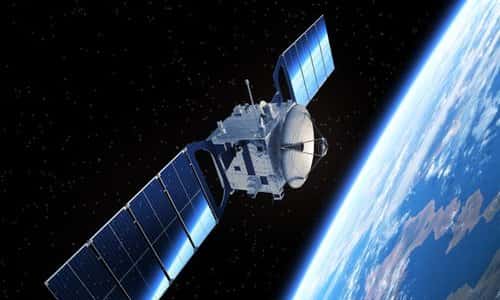Superpowers Prepare For War In Space
 By PNW Staff December 13, 2016
Share this article:
By PNW Staff December 13, 2016
Share this article:
From the time mankind first soared into space, the resulting race has largely been peaceful, but that has begun to change.
The
International Space Station is an incredible symbol of international
cooperation and rival nations routinely share knowledge, resources,
launch sites and even space crews.
But at the
same time the thousands of critical satellites orbiting the Earth that
allow for long range communications, surveillance and navigation present
an extremely inviting target for a nation at war.
Much of the technological advantage enjoyed by the United States and other world powers is owed to the use of satellites.
Troop movements can be precisely coordinated with GPS,
drones can be flown from bunkers on the other side of the globe,
battlefield commanders can communicate over vast distances and
high-resolution cameras can provide insight into enemy positions.
Just
as important, the network of communications satellites allows for
civilian communications, data transfer and economic coordination.
Clearly,
any nation that can destroy its opponent's satellites gains a
considerable advantage, and that is exactly what Russia and China are
now preparing to do.
Russia is reported to have launched an orbital kinetic kill vehicle, a sort of kamikaze satellite, known as the Kosmos 2499.
Already
traveling at incredible speeds, the satellite would target American
satellites in orbit and obliterate them with a simple collision.
China
has launched its own satellite killer, one equipped with grappling
arms, called the Shiyan. Other weapons pulled from the pages of science
fiction include lasers and magnets.
The Chinese
Shiyan satellite has performed at least one successful capture using
its grappling arm, capable of throwing other satellites out of orbit or
stripping them of their useful parts.
China
also earned condemnation recently for self-destructing several of its
own satellites and showering the area with dangerous, high-speed debris.
Russia
has also been spotted using what has been dubbed 2014-28E, a rather
enigmatic name for a secret military satellite. Launched clandestinely
along with three Russian communication satellites, it was at first
believed to be simply debris resulting from the launch.
When
the object began to change orbit however, its propulsion capabilities
became apparent. Russia has kept quiet about the craft but many believe
it to another example of an erstwhile Soviet-era program called
Istrebeitel Sputnik, or Satellite Fighter.
These
are not proposals or prototypes of what Russia and China could launch,
they are offensive satellites already orbiting the Earth with a singular
purpose: removing American satellites from above the field of battle.
The
killer satellites orbit at varying altitudes between 100 and 22,000
miles, depending on the altitude of their targets. Though some have
likened attacking a satellite to hitting a bullet with another bullet,
the capability is now there.
Paul Graziani, the
CEO of AGI, a civilian company that tracks satellites, said in response
to the news that they, "Would absolutely be shocked if the US military
were not on a war footing now based on what we see." The translation: we
don't know what offensive capabilities American military satellites may
have.
The US Air Force Space Command has 38,000 employees and
an annual budget of $8.9 billion and yet as recently as 2015 Deputy
Defense Secretary Robert Work went on the record to voice his "grave
concern" that the US military was not "ready to do space operations in a
conflict that extends into space."
War game simulations would prove him right just months later when US forces were defeated in a mock attack on its satellites.
But
that seems to changing now. With a renewed sense of confidence, the
Deputy Defense Secretary promised that the US would "strike back" and
"knock them out" if attacked in space.
"From
the very beginning, if someone starts going after our space
constellation, we're going to go after the capabilities that would
prevent them from doing that," Work said in a statement to the media.
A
space war fought in orbit to protect critical communications and
guidance infrastructure is fundamentally different from other forms of
warfare.
When General William Shelton,
formerly the head of US space command, was asked if we had the
capability to protect our satellites his answer was clear, "Could we
provide active defense of our own satellites? The answer's no," he
responded.
At this point, the only defense
would be a reactive counter-attack targeting the enemy's fleet of
satellite killers before they could do damage to any of our critical
infrastructure.


No comments:
Post a Comment